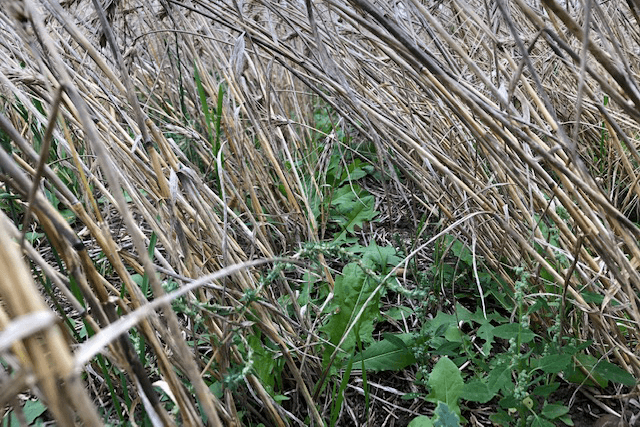Fall Spraying: You'll Be Glad You Did
Sep 23, 2019

If you came to me and said, “Luke, I can either spray now or in the spring – which is it?” I’d respond with, “Absolutely spray now” – no other questions asked.
Look at Your Stubble
It’s no surprise that the crazy rains bringing us excellent yields are also bringing us a beautiful flush of weeds.
Many of the crops planted early or mid-season did not get sprayed (or got the bare minimum) due to what seemed like a drought starting in June. Those weeds and the ones that were missed in the tough mid-June spraying conditions have gone to seed. Boy, are they thriving now!
It’s one thing to let frost kill an odd pigeongrass, kochia, or pigweed instead of spending the money and time spraying. But a huge matt of pigeongrass or kochia is a problem and we have a month of potential growth left. That’s not to mention all those little rosettes that will eventually turn into huge plants.
No Fall 2018 Spray + Dry Start to 2019 = Mess
Anyone remember the feeling of digging up seed in June that hadn’t germinated yet? It wasn’t pretty. But then things changed – chances are those fields are still not harvested due to green streaks. The areas with extreme late germination are where winter annuals had thrived in the fall, sucked up moisture in the spring before the preplant burndown, and made a mess of things for 2019.
Although that’s an extreme example, setting yourself up for a repeat of that is something you want to avoid.
Winter Annuals and Perennials to Target this Fall
These species are almost ALWAYS easier to kill in the fall before they get established and hardened off through winter:
- Tansy Mustard
- Blue Mustard
- Marestail
- Narrowleaf Hawksbeard
- Prickly Lettuce
- Japanese Brome (Cheatgrass)
- Foxtail Barley
- Field Bindweed
- Canada Thistle
More Reasons to Spray Now:
- Start Seeding Earlier in the Spring.
- Often times one is either waiting to seed until soils are warm enough to germinate weeds or you do a spring burndown and wonder, “Why did I just do that? This is extremely clean!” In reality, you probably missed the first flush of weeds or the winter annuals hadn’t come out of dormancy yet.
- Use Different Modes of Action to Hedge Resistance.
- Check my next article on more specific chemistry options. But residual chemistries and higher rates of the “old basics” (2,4-D and Dicamba) can be used to do a better job.
- Save Money and Time.
- At times, chemical prices can be cheaper in the fall than in the spring. With glyphosate, you can often use less of a rate now than in the spring (provided you have a good tankmix). It typically takes more money with less effective chemistries to go after Canada Thistle in the spring and summer.
- 1 plant now = 10,000 seeds later.
- That’s the case for Hawksbeard, dandelion, and several other species. Once things get out of control and go to seed, it’s hard to ever catch up.
Don’t get me wrong – I’m not advocating for fall spraying to REPLACE spring burndowns. There are plenty of species that will germinate in the spring – kochia, buckwheat, Russian Thistle, wild oats, etc…
But what if you could apply something now with residual into spring for both fall and spring annuals? (Here’s another link to my chemistry-specific article).
Moral of the story is: As painful as it might be right now to jump in the sprayer (while finishing harvest), you’ll be very glad you did next spring.